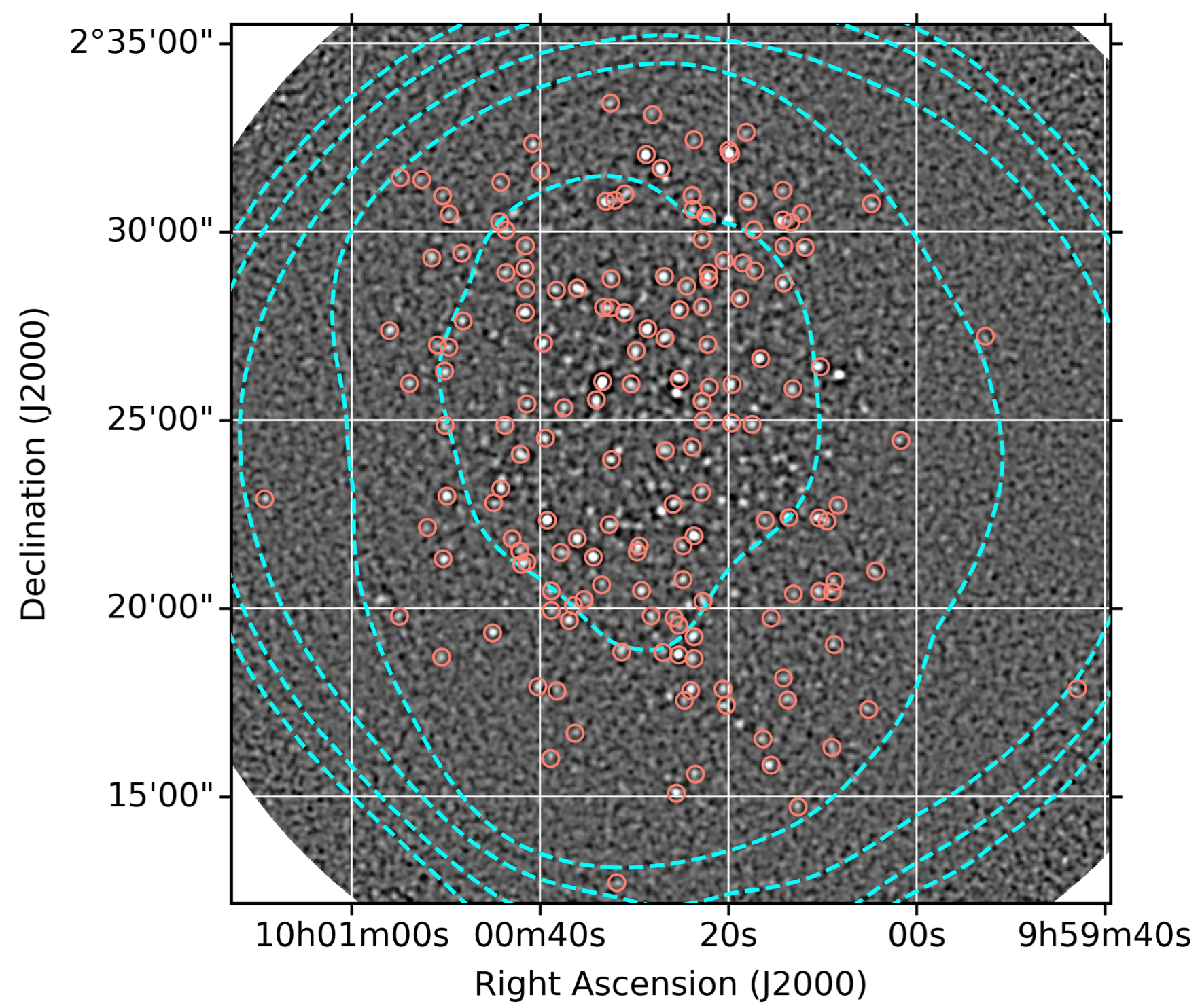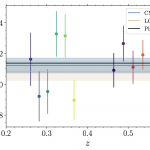Chen-Fatt Lim, Chian-Chou Chen, Ian Smail, Wei-Hao Wang, Wei-Leong Tee, Yen-Ting Lin, Douglas Scott, Yoshiki Toba, Yu-Yen Chang, YiPing Ao, Arif Babul, Andy Bunker, Scott C. Chapman, David L. Clements, Christopher J. Conselice, Yu Gao, Thomas R. Greve, Luis C. Ho, Sungwook E. Hong, Ho Seong Hwang, Maciej Koprowski, Michał J. Michałowski, Hyunjin Shim, Xinwen Shu, James M. Simpson
The Astrophysical Journal, Vol 895(June, 2020). No. 2
Abstract
We analyze an extremely deep 450 μm image (1σ = 0.56 mJy beam−1) of a ![]() 300 arcmin2 area in the CANDELS/COSMOS field as part of the Sub-millimeter Common User Bolometric Array-2 Ultra Deep Imaging EAO Survey. We select a robust (signal-to-noise ratio ≥4) and flux-limited (≥4 mJy) sample of 164 submillimeter galaxies (SMGs) at 450 μm that have K-band counterparts in the COSMOS2015 catalog identified from radio or mid-infrared imaging. Utilizing this SMG sample and the 4705 K-band-selected non-SMGs that reside within the noise level ≤1 mJy beam−1 region of the 450 μm image as a training set, we develop a machine-learning classifier using K-band magnitude and color–color pairs based on the 13-band photometry available in this field. We apply the trained machine-learning classifier to the wider COSMOS field (1.6 deg2) using the same COSMOS2015 catalog and identify a sample of 6182 SMG candidates with similar colors. The number density, radio and/or mid-infrared detection rates, redshift and stellar-mass distributions, and the stacked 450 μm fluxes of these SMG candidates, from the S2COSMOS observations of the wide field, agree with the measurements made in the much smaller CANDELS field, supporting the effectiveness of the classifier. Using this SMG candidate sample, we measure the two-point autocorrelation functions from z = 3 down to z = 0.5. We find that the SMG candidates reside in halos with masses of
300 arcmin2 area in the CANDELS/COSMOS field as part of the Sub-millimeter Common User Bolometric Array-2 Ultra Deep Imaging EAO Survey. We select a robust (signal-to-noise ratio ≥4) and flux-limited (≥4 mJy) sample of 164 submillimeter galaxies (SMGs) at 450 μm that have K-band counterparts in the COSMOS2015 catalog identified from radio or mid-infrared imaging. Utilizing this SMG sample and the 4705 K-band-selected non-SMGs that reside within the noise level ≤1 mJy beam−1 region of the 450 μm image as a training set, we develop a machine-learning classifier using K-band magnitude and color–color pairs based on the 13-band photometry available in this field. We apply the trained machine-learning classifier to the wider COSMOS field (1.6 deg2) using the same COSMOS2015 catalog and identify a sample of 6182 SMG candidates with similar colors. The number density, radio and/or mid-infrared detection rates, redshift and stellar-mass distributions, and the stacked 450 μm fluxes of these SMG candidates, from the S2COSMOS observations of the wide field, agree with the measurements made in the much smaller CANDELS field, supporting the effectiveness of the classifier. Using this SMG candidate sample, we measure the two-point autocorrelation functions from z = 3 down to z = 0.5. We find that the SMG candidates reside in halos with masses of ![]() (2.0 ± 0.5) × 1013 h −1 M ☉ across this redshift range. We do not find evidence of downsizing that has been suggested by other recent observational studies.
(2.0 ± 0.5) × 1013 h −1 M ☉ across this redshift range. We do not find evidence of downsizing that has been suggested by other recent observational studies.



